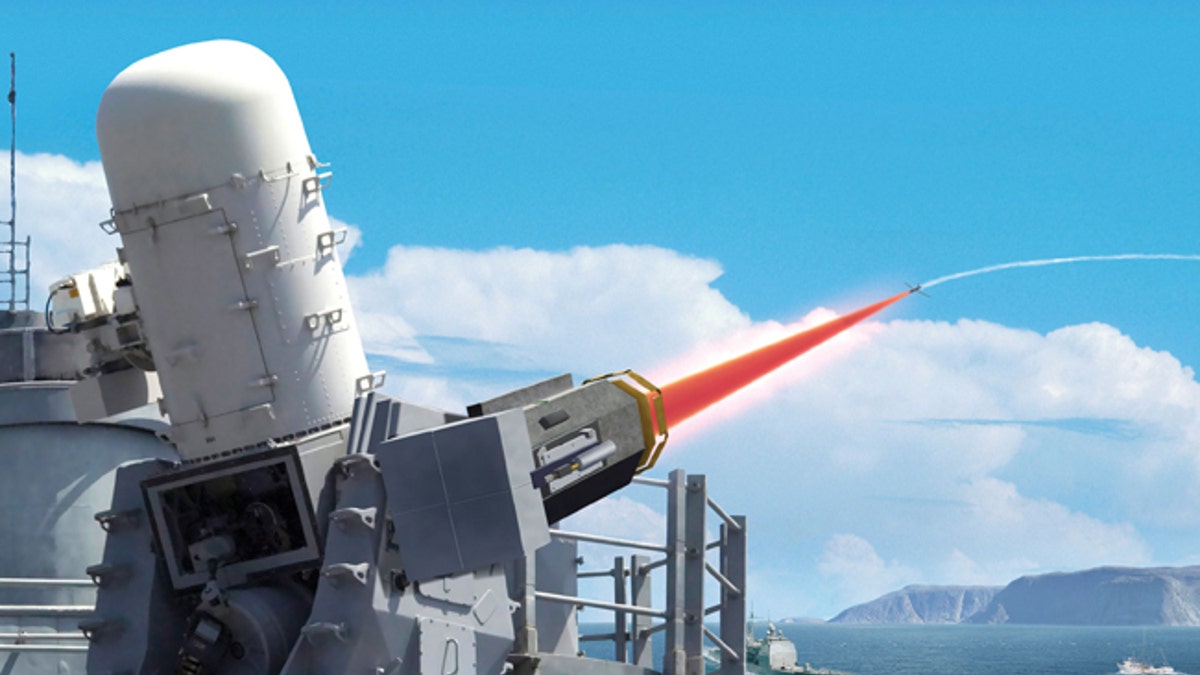
(Raytheon)
Spectators at the Farnborough Airshow in the UK have been shown a video of the U.S. Navy using its Close-In Weapons System to burn up an unmanned aircraft with a laser.
Back in May, the U.S. Naval Sea Systems command claimed it "successfully tracked, engaged, and destroyed" several drones with its new system.
At the Farnborough Show yesterday, the company behind the laser proved it.
The video shows a drone streaking across the ocean, then smoldering and finally bursting into flames as though the sun's rays were concentrated on it through a giant magnifying glass.
The system is fitted to the Navy's "R2-D2" robotic gun turret and was developed to minimize the collateral damage done when drones are destroyed by missiles. Anyone in the impact zone of a drone targeted by missiles is in danger of being showered with shrapnel or hit by the 20mm shell itself if it fails to explode.
The CIWS system simply vaporizes the target.
Developed by Raytheon, the CIWS fires a solid-state laser that produces a 50-kilowatt beam. It can also be used on rockets and even small ships, leading experts to claim it's the beginning of proper, real-world applications for lasers in the military.
Raytheon Missile Systems vice president Mike Booen told the BBC that the system is already installed in many U.S. and NATO ships, linked to the U.S. Navy Phalanx anti-missile system.
“We actually shot down four of four operational UAVs," Mr Booen said. "They were all destroyed and crashed into the sea.”
The system has also been used successfully from a land-based vehicle, but tying it to the Phalanx guidance system was the key to ensuring its success on rolling oceans. Mr Booen said the CIWS gave warfighters "an unlimited magazine."
"As long as they have electricity they have photons, and as long as they have photons they have bullets,” he said.
